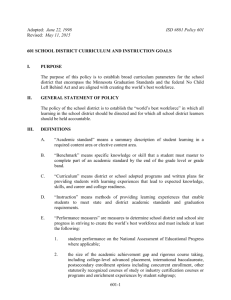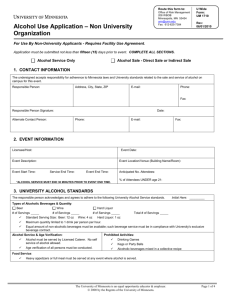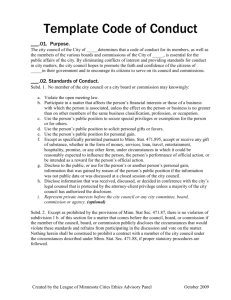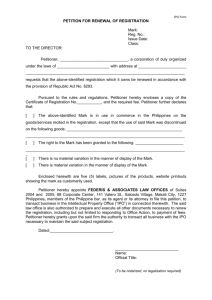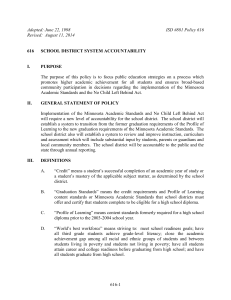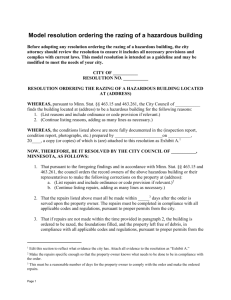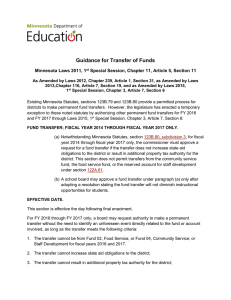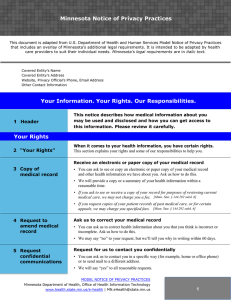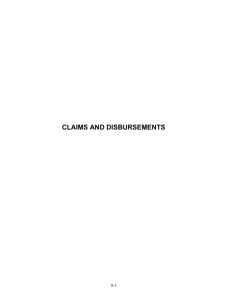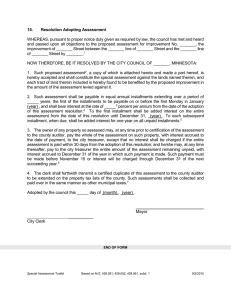Excerpts from Briefs in R.A.V. v. City of St. Paul
advertisement
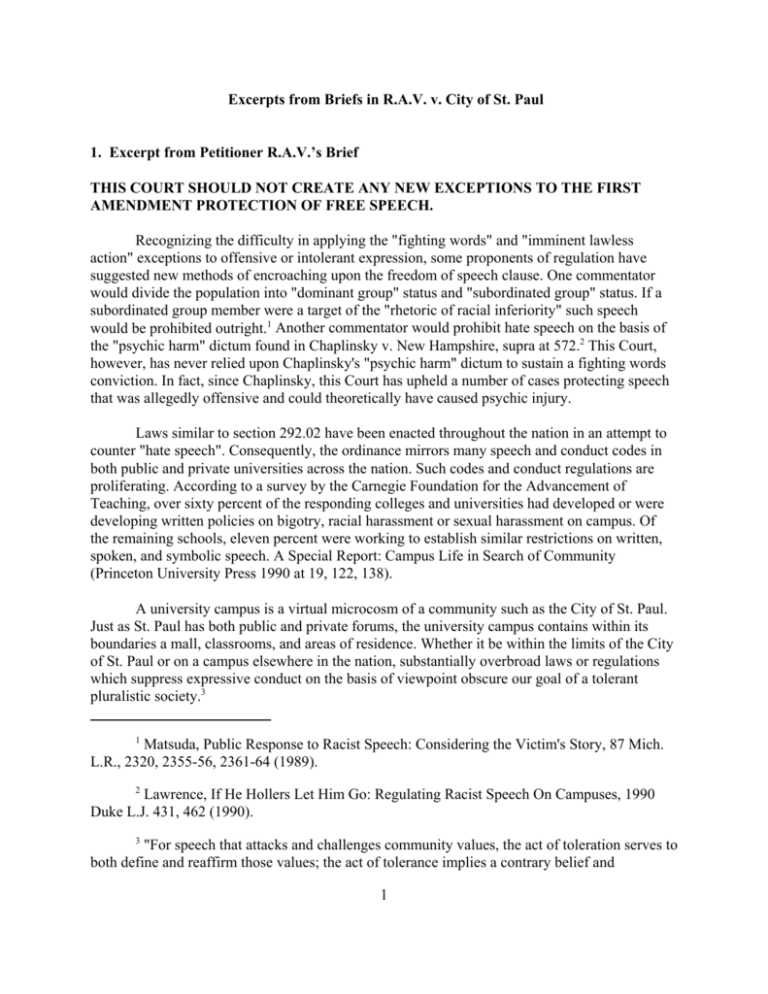
Excerpts from Briefs in R.A.V. v. City of St. Paul 1. Excerpt from Petitioner R.A.V.’s Brief THIS COURT SHOULD NOT CREATE ANY NEW EXCEPTIONS TO THE FIRST AMENDMENT PROTECTION OF FREE SPEECH. Recognizing the difficulty in applying the "fighting words" and "imminent lawless action" exceptions to offensive or intolerant expression, some proponents of regulation have suggested new methods of encroaching upon the freedom of speech clause. One commentator would divide the population into "dominant group" status and "subordinated group" status. If a subordinated group member were a target of the "rhetoric of racial inferiority" such speech would be prohibited outright.1 Another commentator would prohibit hate speech on the basis of the "psychic harm" dictum found in Chaplinsky v. New Hampshire, supra at 572.2 This Court, however, has never relied upon Chaplinsky's "psychic harm" dictum to sustain a fighting words conviction. In fact, since Chaplinsky, this Court has upheld a number of cases protecting speech that was allegedly offensive and could theoretically have caused psychic injury. Laws similar to section 292.02 have been enacted throughout the nation in an attempt to counter "hate speech". Consequently, the ordinance mirrors many speech and conduct codes in both public and private universities across the nation. Such codes and conduct regulations are proliferating. According to a survey by the Carnegie Foundation for the Advancement of Teaching, over sixty percent of the responding colleges and universities had developed or were developing written policies on bigotry, racial harassment or sexual harassment on campus. Of the remaining schools, eleven percent were working to establish similar restrictions on written, spoken, and symbolic speech. A Special Report: Campus Life in Search of Community (Princeton University Press 1990 at 19, 122, 138). A university campus is a virtual microcosm of a community such as the City of St. Paul. Just as St. Paul has both public and private forums, the university campus contains within its boundaries a mall, classrooms, and areas of residence. Whether it be within the limits of the City of St. Paul or on a campus elsewhere in the nation, substantially overbroad laws or regulations which suppress expressive conduct on the basis of viewpoint obscure our goal of a tolerant pluralistic society.3 1 Matsuda, Public Response to Racist Speech: Considering the Victim's Story, 87 Mich. L.R., 2320, 2355-56, 2361-64 (1989). 2 Lawrence, If He Hollers Let Him Go: Regulating Racist Speech On Campuses, 1990 Duke L.J. 431, 462 (1990). 3 "For speech that attacks and challenges community values, the act of toleration serves to both define and reaffirm those values; the act of tolerance implies a contrary belief and 1 Any expansion of narrowly recognized exceptions to the First Amendment would further diffuse the nearly indistinguishable line between permissible and proscribable expression. Further restrictions might curtail some offensive expression but only at the cost of chilling a great deal of protected speech. The result may well be the silencing of political debate, the encouraging of orthodoxy, and the endangering of the individual's right to dissent. To enforce a notion of civility to the point of forbidding unpopular minority expression is to underestimate the citizens of this country at the cost of our basic right of self-expression. This Court should not ignore the guidance of established First Amendment analysis and create a new category of expressive communication subject to regulation. 2. Excerpt from Respondent City of St. Paul’s Brief BIAS-MOTIVATED OFFENSES DO NOT IMPLICATE POLITICAL DIALOGUE IN A PUBLIC FORUM. Core political expression depends on context. Things like picketing, marching, and politically demonstrating (as in the flag burning cases) are commonly understood to lie at the heart of public expression, even though acts and not words are involved. Core political expression admittedly may not be proscribed for any but compelling reasons. Secret cross burners and public flag burners are similar only in the unpopularity of the position that they take. The First Amendment does protect the unpopular. It does not, however, protect acts, the only expressive content of which is to threaten others. History dictates that there is a need for specific enactments to deal with the use of symbols of racial, religious, ethnic or other group hatred. Otherwise, there is a danger that minority groups will not understand that this aspect of the behavior they have experienced is not condoned by the majority. This is a lesson the majority also must understand and openly acknowledge. Therefore, Petitioner's often repeated argument that bias-related crimes may properly be prosecuted adequately under the general criminal laws is fatally flawed.1 Only where the demonstrates a confidence and security in the correctness of the community norm. Through toleration in short, we create the community, define the values of that community, and affirm a commitment to and confidence in those values." Bollinger, The Tolerant Society 158 (1986). 1 Petitioner, in his Brief, greatly overstates the applicability of Minnesota's general penal provisions as they relate to the alleged cross burning in this case. Minnesota's bias-motivated assault statute (Minn. Stat. § 609.2231, subd. 4) applies only to an act "done with intent to cause fear in another of immediate bodily harm or death" of the infliction of actual bodily harm (Minn. Stat. § 609.02, subd. 10) (emphasis added). The fear of harm experienced by the African American family in the instant case, while very real, may not be sufficiently immediate, nor may 2 bias-motivated aspects of the conduct is explicitly addressed can dialogue start that will lead to reconciliation and peace among communities. A late-night cross burning poses an anonymous, indefinite threat. The inability of the victim to identify the cross burner and to know when, where and how he will strike next, adds to the fear and terror of the victim. The specific harm caused by the burning cross is not directly addressed by any of the foregoing general penal provisions. Even if one or more of the other provisions applies, the mere overlap or duplication of penal provisions does not raise First Amendment issues. The nature of the act depends on the context in which it is committed; Petitioner acted with a small group at night, his "expression" conveyed only -- at least directly -- to his victims, and indirectly to members of his victims' racial group. The "context" was not one of expressing himself to others in the hope of eliciting their support. He did not act in a public forum; his acts or words -- which are essentially equivalent -were not uttered as part of a peculiarly expressive event, as would be the case of (a) wearing clothing with a message on it, Cohen v. California, 403 U.S. 15 (1971); (b) demonstrating politically (flag burning), Texas v. Johnson, 491 U.S. 397 (1989); (c) picketing, Boos v. Barry, 485 U.S. 312 (1988); or (d) parading, Collin v. Smith, 578 F.2d 1197 (7th Cir. 1978), cert. denied, 439 U.S. 916 (1978). The cross burner does not shop in Justice Holmes' marketplace of ideas. He is not interested in his victim's responding, or in starting a dialogue. He wants his victim to be silent and intimidated, and simply to leave. the requisite specific intent exist, to come within this definition. The terroristic threats provision (Minn. Stat. § 609.713, subd. 1) applies only when the purpose of a threat is to terrorize another. The trespass provision (Minn. Stat. § 609.605, subd. 1) applies only when a person refuses to leave private property or returns to the property after being told to leave. Similarly, the Minnesota interference with privacy provision (Minn. Stat. § 609.746, subd. 2) applies only if a person repeatedly follows or pursues another after being told not to do so. Minnesota's criminal damage to property provision (Minn. Stat. § 609.595) may have no application at all in the instant case, since Petitioner burned his own property, and no incidental burning of the victims' surrounding property is alleged. More fundamentally, whatever incidental damage to property may have occurred misses entirely the essence of the injury sustained and the crime committed. Finally, even Minnesota's disorderly conduct statute (Minn. Stat. § 609.72, subd. 1) applies to "offense, obscene or abusive language." Notwithstanding Petitioner's stance before this Court, Petitioner, if charged under the statute, undoubtedly would maintain that the act of burning a cross did not constitute language. 3
